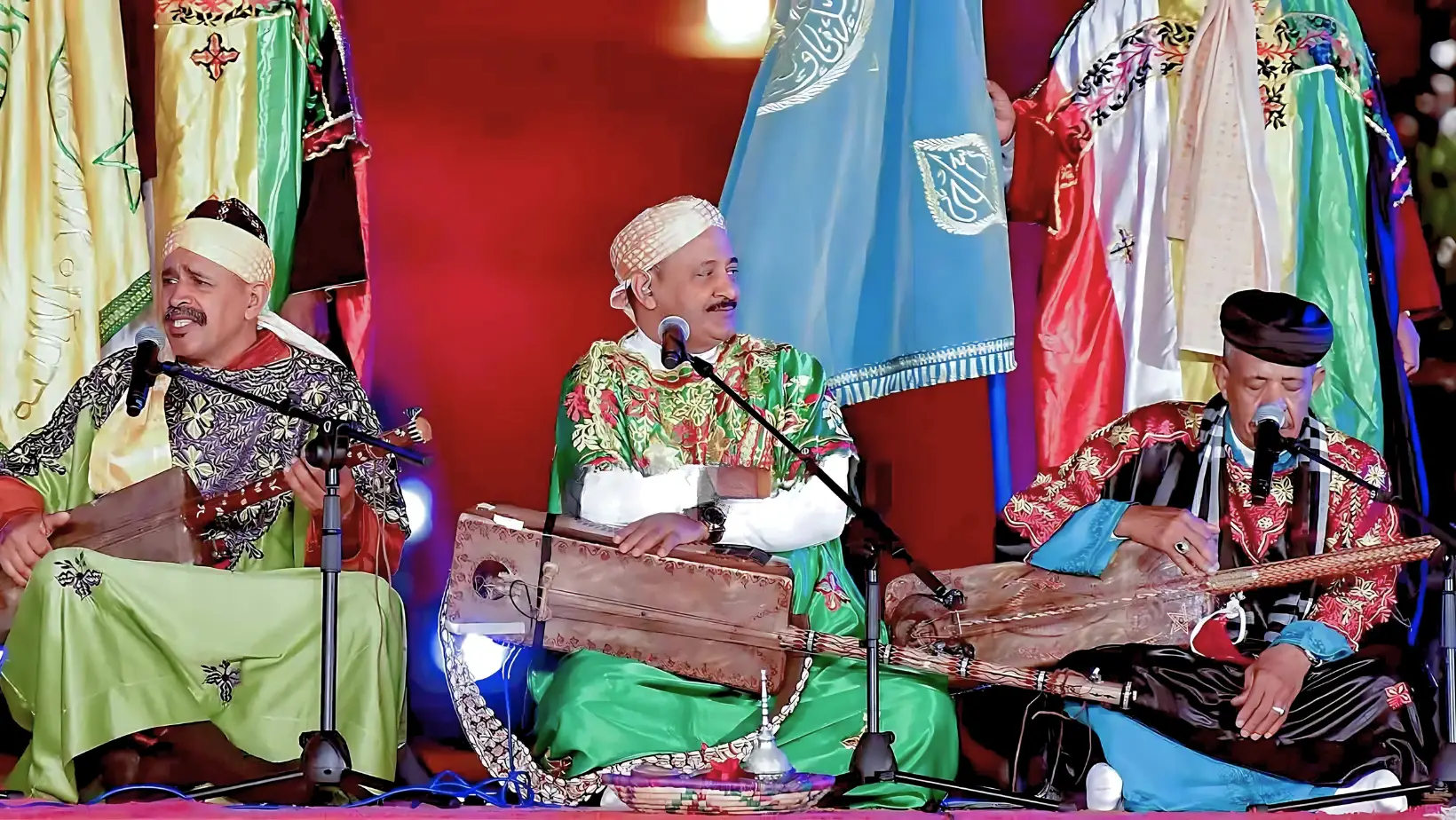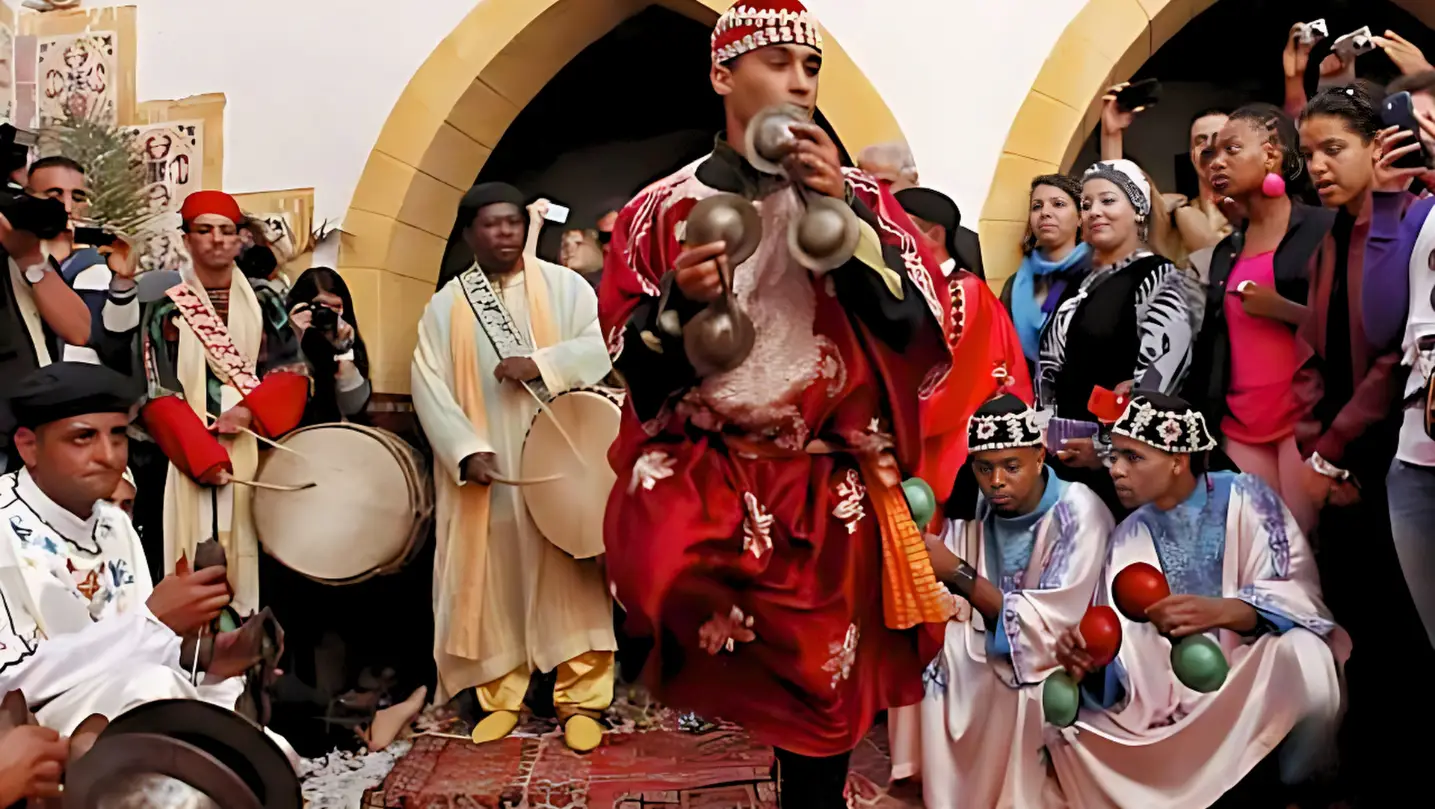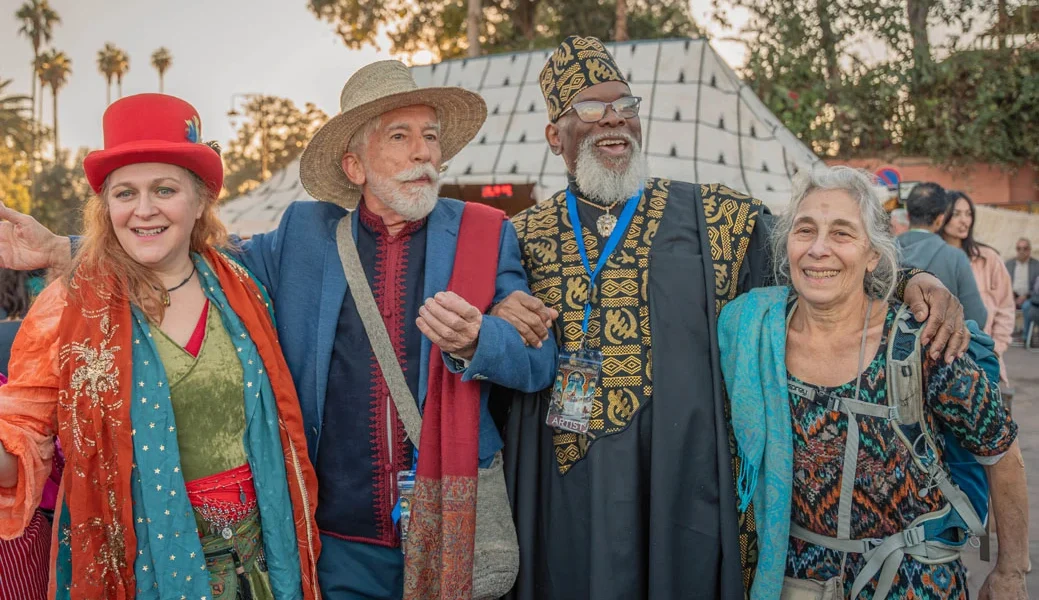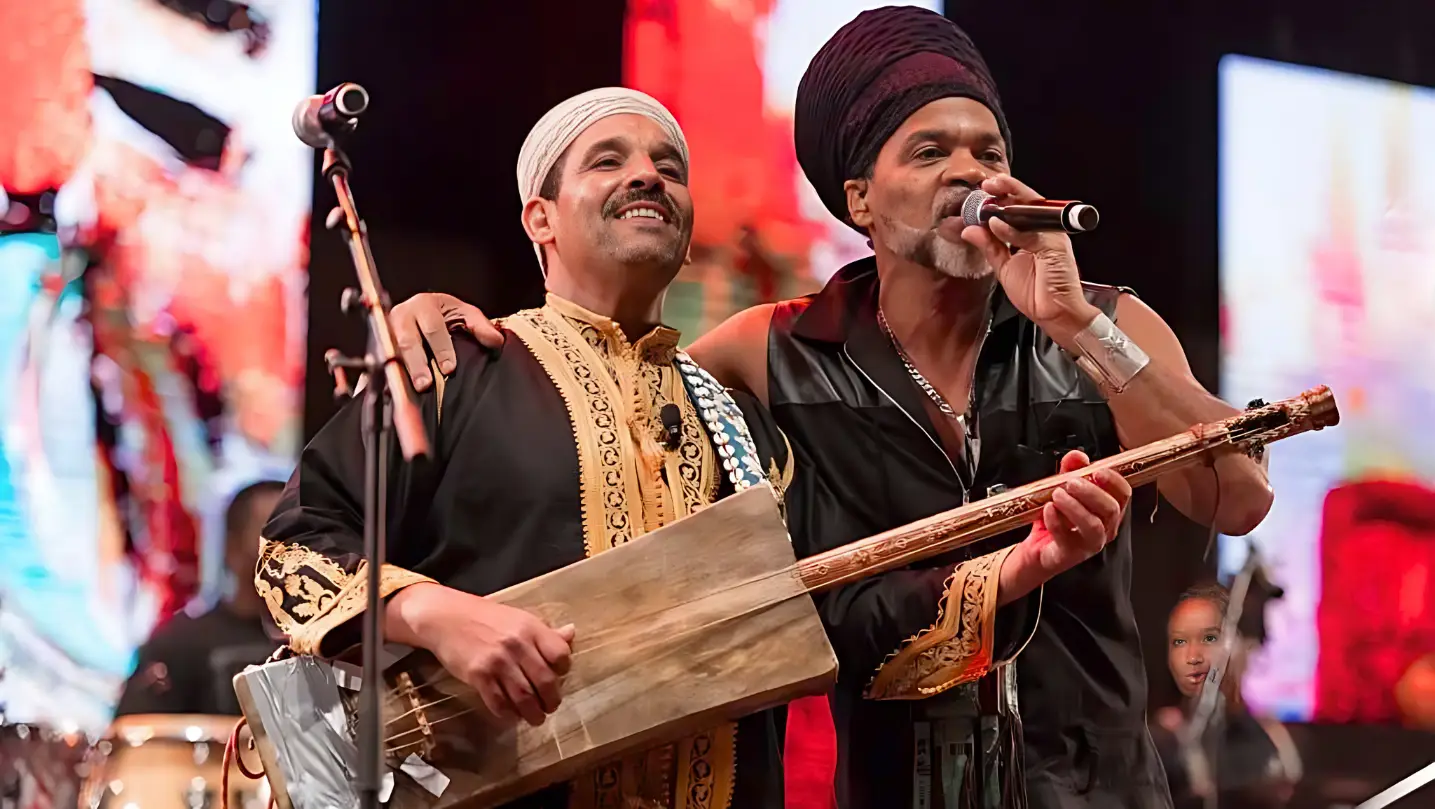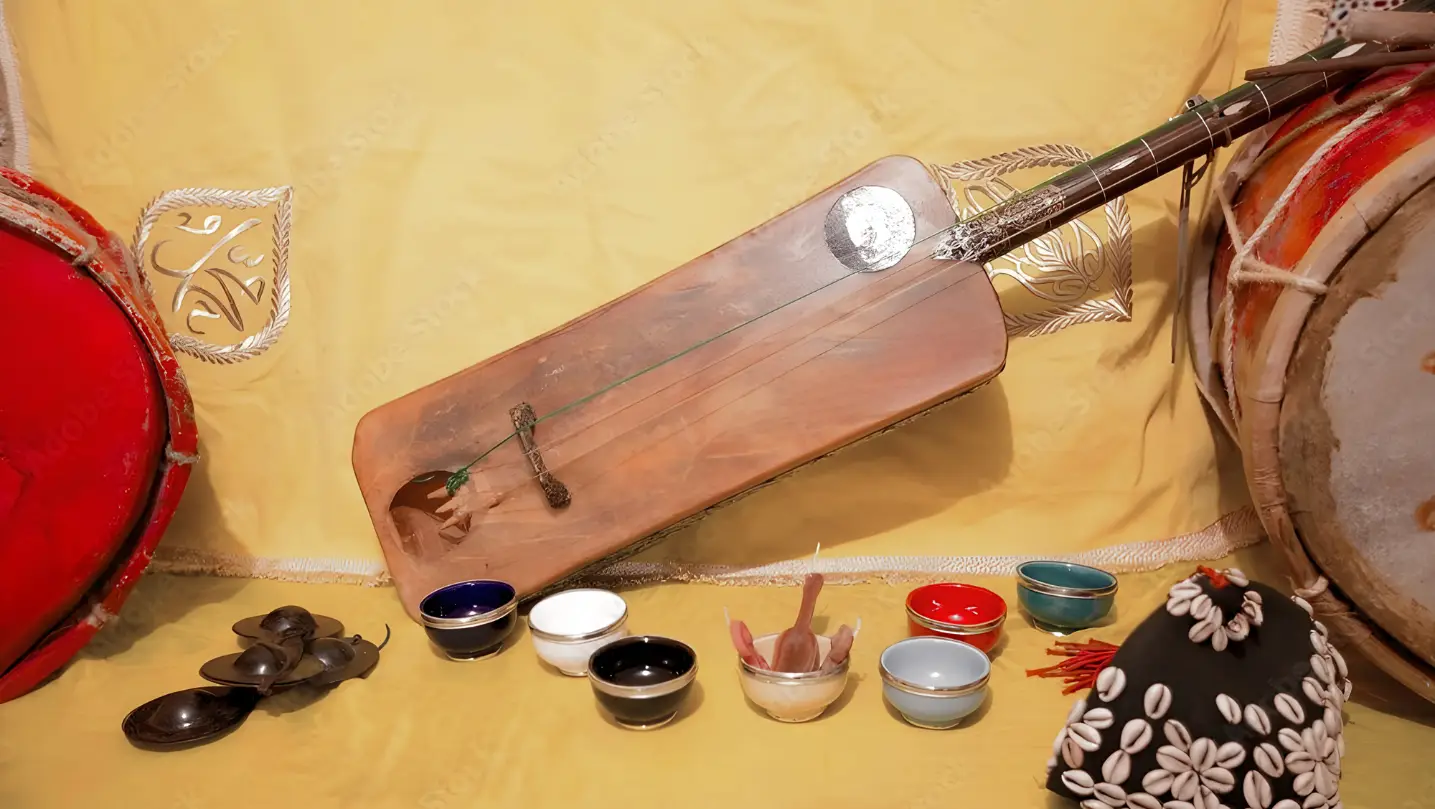Gnawa music, with its deep African roots and spiritual undertones, has not only preserved its traditional essence but also significantly influenced contemporary music genres worldwide, especially blues and jazz. The guembri, a three-stringed lute that is central to Gnawa music, has been instrumental in this cultural crossover. This article explores how the rhythmic patterns and unique sound of the guembri have permeated and enriched these genres, contributing to their evolution and global appeal.
Gnawa Music’s Entry into Western Music
The migration of Gnawa music into Western music circles primarily began through the international exposure of Moroccan culture and its music festivals, notably the Gnaoua World Music Festival in Essaouira. Renowned jazz and blues musicians, intrigued by the mystical allure of Gnawa music, started collaborating with Gnawa Maâlems, leading to a fusion of sounds that resonated with global audiences.
Pioneering Collaborations
One of the earliest and most notable collaborations was between American jazz musician Randy Weston and Gnawa Maalem Abdellah El Gourd in the late 1960s. Weston, captivated by the spiritual depth and rhythmic complexity of Gnawa music, incorporated the guembri into his performances, bridging the gap between African music and American jazz.
Influence on Blues Music
Blues, with its deep roots in African-American history, shares an intrinsic connection with Gnawa music through its African origins. The guembri, similar to the banjo, which originated from African string instruments, has a rhythmic playing style that echoes the blues’ emphasis on soulful, repetitive beats. This connection was highlighted in collaborations such as those involving Gnawa musicians and blues legends like Robert Plant and Jimmy Page. The fusion of the guembri’s hypnotic rhythms with the guitar riffs of blues music created a new layer of depth and resonance in the blues genre.
Impact on Jazz Music
Jazz, known for its emphasis on improvisation and complex rhythms, found a complementary partner in Gnawa music. The guembri’s ability to produce a range of sounds from deep, percussive beats to melodic hooks fits perfectly with the improvisational nature of jazz. Musicians like Archie Shepp and Pharoah Sanders explored these elements, integrating Gnawa rhythms and scales into their compositions, thus enriching the jazz sound with new, spiritual dimensions.
Contemporary Fusion and Experimental Music
Today, the influence of the Guembri and Gnawa music extends beyond traditional genres to electronic and experimental music. Artists and DJs worldwide are blending guembri loops and Gnawa rhythms with electronic beats, creating a vibrant, modern sound that transcends cultural and musical boundaries. This fusion not only highlights the versatility of the guembri but also ensures that Gnawa music continues to evolve and influence global music trends.
Conclusion
The guembri’s deep, soul-stirring beat is more than just a musical instrument; it is a bridge connecting Morocco’s Gnawa heritage with the world. Its influence on blues and jazz has not only enriched these genres but also opened avenues for cultural exchange and musical innovation. As we continue to explore and integrate diverse musical traditions, the guembri remains a symbol of the universal language of music and its power to unite and inspire across cultures.
